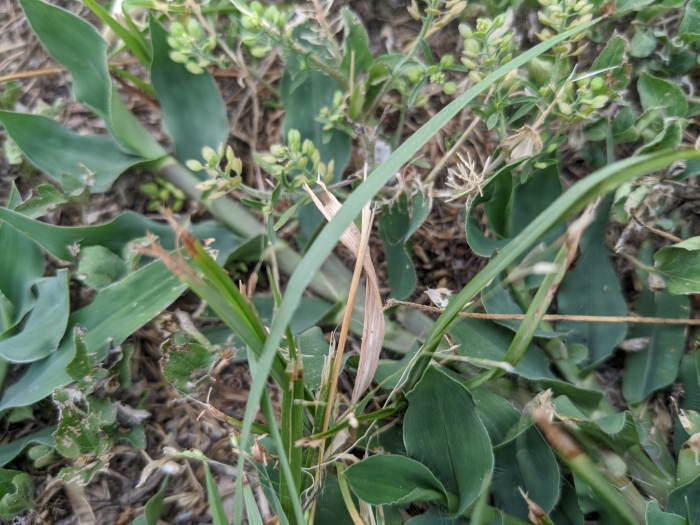Hall’s Panicgrass
(Panicum hallii)
Hall’s Panicgrass (Panicum hallii)
/
/

Cleveland Powell
CC BY 4.0
Image By:
Cleveland Powell
Recorded By:
Copyright:
CC BY 4.0
Copyright Notice:
Photo by: Cleveland Powell | License Type: CC BY 4.0 | License URL: http://creativecommons.org/licenses/by/4.0/ | Rights Holder: Cleveland Powell | Publisher: iNaturalist | Date Created: 2020-07-01T10:32:58-07:00 |


















































Estimated Native Range
Summary
Panicum hallii, commonly known as Hall’s Panicgrass, is a deciduous perennial grass native to arid and semi-arid regions, including prairies, open woodlands, and scrublands in the South Central United States and Mexico. It typically grows to a height of 1-2 feet (0.3-0.6 meters) and a width of 0.1-0.3 feet (0.03-0.09 meters). This grass has a clumping habit with fine-textured foliage and produces airy panicles of small, wind-pollinated flowers in late summer to fall. The flowers are not particularly showy, but they add a delicate texture to the landscape.
Hall’s Panicgrass is valued for its drought tolerance and its ability to thrive in challenging environments, making it a suitable choice for xeriscaping and naturalistic plantings. It is also used for erosion control and as a forage grass in its native range. In cultivation, it requires full sun exposure and can tolerate a range of soil types, provided they have good drainage. While it prefers medium amounts of water, it can survive with less once established. There are no major disease or pest problems associated with this species, but it can self-seed and spread if conditions are favorable, which may be considered undesirable in some managed landscapes.CC BY-SA 4.0
Hall’s Panicgrass is valued for its drought tolerance and its ability to thrive in challenging environments, making it a suitable choice for xeriscaping and naturalistic plantings. It is also used for erosion control and as a forage grass in its native range. In cultivation, it requires full sun exposure and can tolerate a range of soil types, provided they have good drainage. While it prefers medium amounts of water, it can survive with less once established. There are no major disease or pest problems associated with this species, but it can self-seed and spread if conditions are favorable, which may be considered undesirable in some managed landscapes.CC BY-SA 4.0
Plant Description
- Plant Type: Grass
- Height: 1-2 feet
- Width: 0.1-0.3 feet
- Growth Rate: Moderate
- Flower Color: N/A
- Flowering Season: Summer, Fall
- Leaf Retention: Deciduous
Growth Requirements
- Sun: Full Sun
- Water: Medium
- Drainage: Medium
Common Uses
Bird Garden, Butterfly Garden, Deer Resistant, Drought Tolerant, Low Maintenance, Rabbit Resistant
Natural Habitat
Arid and semi-arid regions, including prairies, open woodlands, and scrublands
Other Names
Common Names: Hall’s Panicum, Hall Panicum, Hall’s Panic
Scientific Names: , Panicum hallii, Panicum hallii var. hallii, Panicum hallii subsp. hallii, Panicum hallii var. filipes, Panicum filipes, Panicum hallii subsp. filipes, Panicum virletii,
GBIF Accepted Name: Panicum hallii Vasey